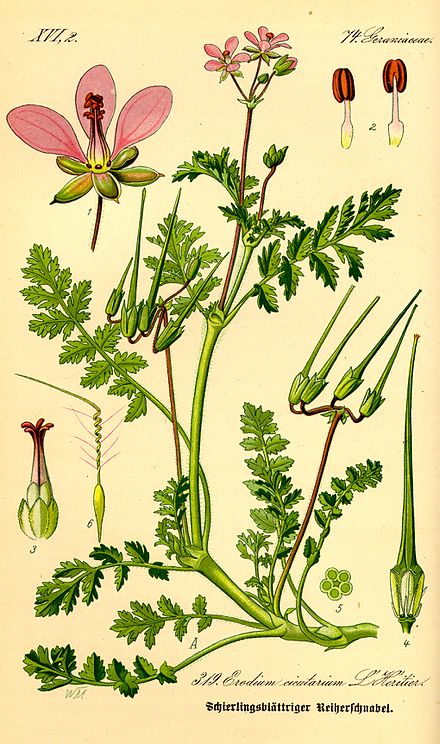
Geraniaceae is a family of flowering plants that includes a wide range of species commonly known as geraniums or cranesbills. Here are several defining characteristics:
- Leaves: The leaves of Geraniaceae plants are usually palmately lobed or divided. This means that the leaves have several distinct lobes or leaflets radiating from a single point of attachment, often resembling the shape of a hand.
- Flowers: The flowers of Geraniaceae are typically five-petaled and have a radial symmetry. They can vary in color, including shades of pink, purple, white, and red. The petals are often veined, and the flowers are usually hermaphroditic, meaning they have both male and female reproductive parts.
- Fruits: The fruit of Geraniaceae plants is a distinctive structure known as a schizocarp. This fruit consists of five segments that split apart when mature, each containing a seed. When the segments split, they can resemble a crane’s bill, which is how the common name “cranesbill” for some species in this family originated.
- Sepals: The sepals of Geraniaceae flowers are typically fused to form a tubular or bell-shaped structure called the calyx. The calyx often has pointed lobes and surrounds the base of the petals.
- Inflorescence: The flowers of Geraniaceae are usually arranged in umbels, which are clusters of flowers that radiate from a single point on the stem.
- Glandular Hairs: Many species in this family have glandular hairs on their leaves and stems, which can produce aromatic compounds.
- Aromatic Foliage: Some members of Geraniaceae are known for their aromatic foliage, which can release pleasant fragrances when touched or crushed. This is particularly characteristic of scented geraniums (Pelargonium species).
- Stipules: Many Geraniaceae species have stipules at the base of their leaves. Stipules are small, leaf-like structures that can be important for classification.
Here’s a screenshot of the key to genera within the Geraniaceae from the Jepson eFlora:


Click here for a video showing the characteristics of the Geraniaceae.